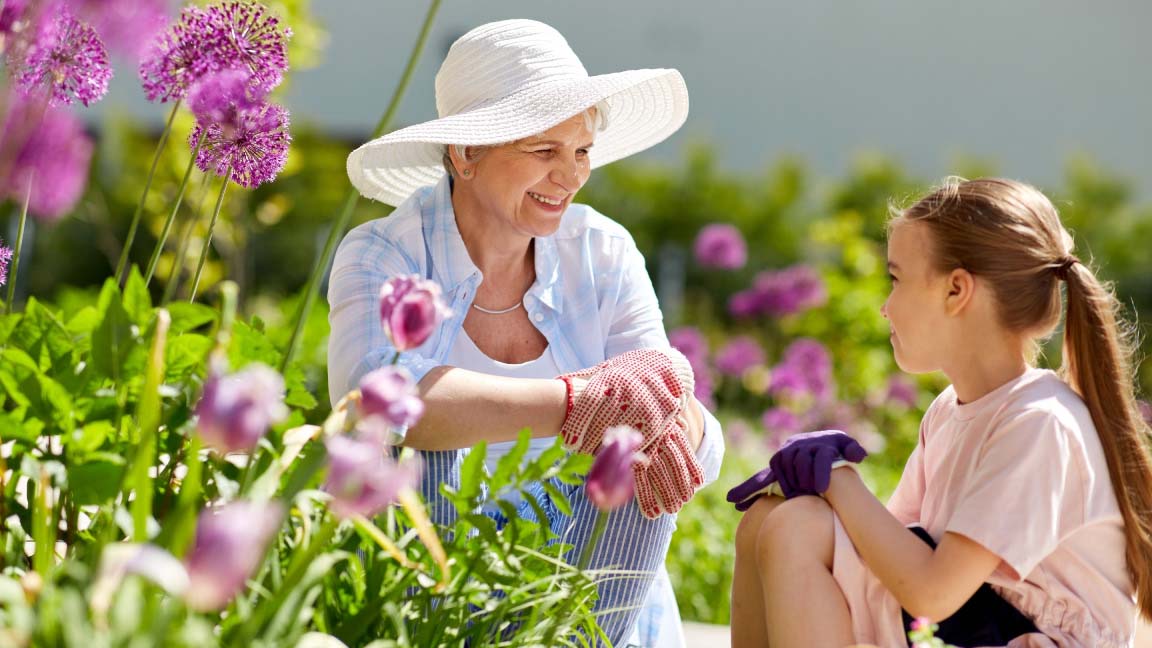
We’ve got a secret to share. It’s possible to add year-round colour to your home with low-maintenance garden flowers that will have you neighbours wondering how you manage such an impressive display without spending hours each month tending to them.
Garden experts including Sarah Raven have shared their favourite fuss-free flowers with Saga. Our ten-strong list is easy to grow, and apart from regular watering, a little annual pruning and making sure you stay on top of deadheading for some, they should reward you with blooms.
What is ‘mulching’? Gardener Charles Dowding told Saga a mulch is “any cover on top of the soil, and it could even be black plastic”. He explained to us that mulching is “a vague word, and the only meaning is ‘something on top of soil’”. But mulching is important to maintain the health and vitality of your flowers.
Compost – whether it’s multipurpose and bagged, or from your garden and kitchen waste – is a useful mulch. Most of these low-maintenance garden flowers will require a mulch at some point to ensure they survive the winter, so it’s important to make sure you know what each plant needs. The RHS has some useful information on its website about mulching the plants in your garden.
Tropical, summery vibes
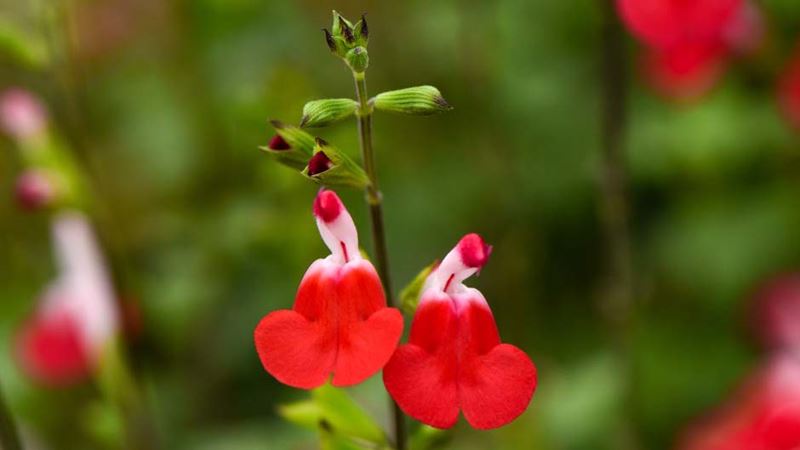
It only needs pruning once a year, at the end of April, according to Tom Hart Dyke, curator of The World Garden at Lullingstone Castle. You can choose to hard prune if necessary to improve its shape (which involves cutting the shrub right back before new foliage emerges – advice for this differs, but around 15cm (6in) is common). No other maintenance is required, and you can prolong flowering by deadheading.
“I’ve had the same Hot Lips plant for 18 years at The World Garden,” Hart Dyke says. “It has withstood a barrage of climatic conditions.”
He explains this cultivar of sun-loving salvia is a sub-shrub, originally hailing from Mexico, with dramatic bicoloured white and red flowers throughout the summer that are extremely attractive to bees and other pollinators. “The deliciously fragrant oily foliage is an added treat.”
Soil type: Any pH, well drained but moist. Position in full sun.
When to plant: May-June
An option for a shady spot
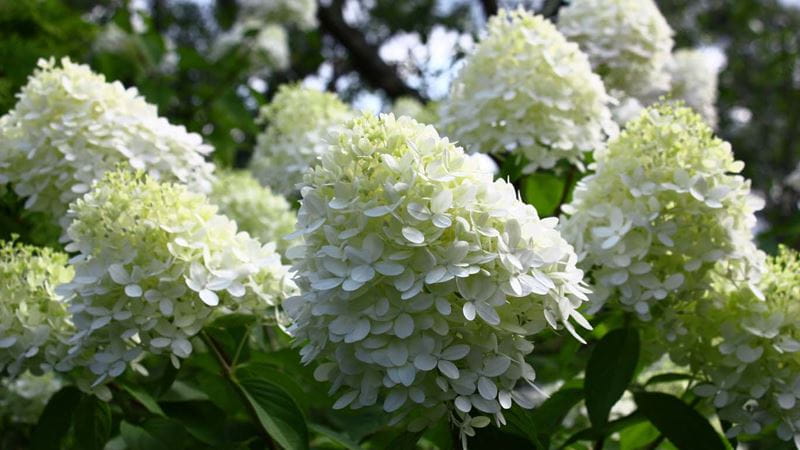
Apart from a little general light pruning, as you’d expect with a flowering shrub, this pretty, cream-flowered hydrangea will reward you with bounteous blooms.
Raven recommended it to us as a good option for a shady spot. She loves its “huge, soft green to cream pyramidal pompom flowers... flowering from June to October”.
The only other general upkeep needed is to mulch deeply in the autumn – a good quality compost will do – as the soil needs to remain “rich in organic matter”.
Soil type: Any pH, well drained. Position in partial shade, or even full shade.
When to plant: May-September
Grow flowers easily from cuttings
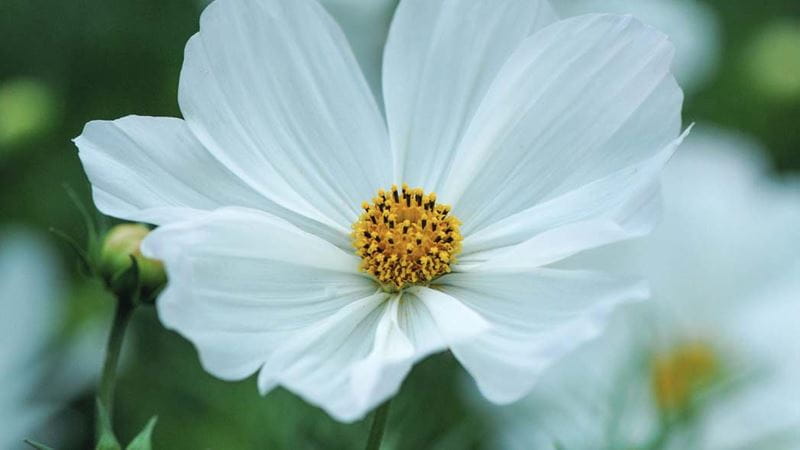
You get a lot of bang for your buck with this annual cosmos cultivar. Raven told Saga she “pinches the tips” of this flower (which means snipping the new growth – Raven recommends doing this at 15-20cm (6-8in)). This encourages a bushier plant with more flowers.
Then rather than popping these cuttings on your compost heap, she advises you replant them – they're fine in poor soil conditions – and you can repeat the process. It’s a simple yet rewarding flowering project. Raven says this cosmos is “supreme for a border”, but it’ll need a stake by its side to keep it upright.
If you’re growing in pots, she suggests the ‘Sonata White’ cultivar.
Soil type: Any pH, well drained but moist. Position in full sun.
When to plant: May-June
A magnet for insects

'Bowles's Mauve' only requires a light trimming of the “old straggly flower spikes” at the end of the season, according to Tom Hart Dyke of The World Garden. “That'll literally take you a couple of minutes.”
He says this plant is a low-maintenance beauty and is excellent in a container. It can be placed in a sunny or partially shaded position. “It's a delightful perennial wallflower that is a magnet for a huge array of insects. The soft mauve flowers just keep on giving, lasting from April to October.”
Soil type: Alkaline/neutral, well drained. Position in full sun or partial shade.
When to plant: May-September
Scatter on salads
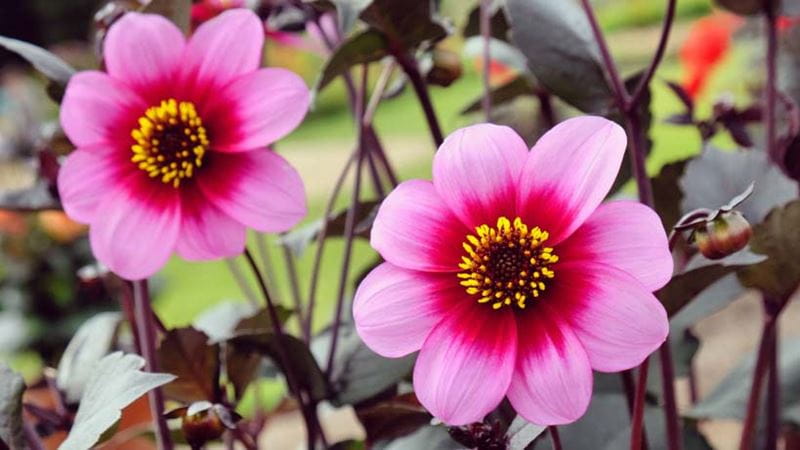
Dahlia flowers may look impressive, but they’re surprisingly easy to look after. You can pinch out the growing tips at 20cm (8in) for a sturdier, bushier plant with more flowers, as it encourages it to grow wider. If you get particularly frosty winters, you might want to keep it somewhere light and warm, such as a greenhouse or window sill. Other than that, it’ll look after itself.
If you’re keen to add flowers to your kitchen garden, then you’re in luck. All dahlia flowers are edible, according to Raven, so scatter their petals on salads for flavour, texture and colour.
The plant should flower between July and November and will need the support of a stout stick – keep an eye on it and tie it in every couple of weeks. Raven, who bred this dahlia and named it after a dear friend and longstanding business partner, told us it’s “brilliant for pollinators, lovely in airy pots, and excellent in a vase”.
Soil type: Neutral, well drained but moist. Position in full sun.
When to plant: May-July
No, thankfully. Though some flowers need their faded heads removed to encourage more flowers and keep things looking tidy, it’s not always necessary (and in some cases, is counterproductive).
“Typically, fuchsias, bedding lobelia and salvias either don't set much seed or neatly deadhead themselves,” the RHS explains on its website. “Do not remove the faded flowers on plants that produce seed loved by birds, including Rudbeckia, cornflower and sunflower. There is no need to deadhead rose cultivars that bear hips or other plants that bear berries in the autumn. “Leave plants that have ornamental seeds or fruits without deadheading.”
The RHS gives some examples of these, including alliums, love-in-a-mist (Nigella), stinking iris (Iris foetidissima) and bladder cherry (Physalis alkekengi).
Long-lasting in a vase

“Just one cutback of the old, dead stems in winter [after flowering] and that’s it,” explains Hart Dyke. “This is an extremely easy-going, fuss-free plant.”
He says that this cultivar of alstroemeria is a delightful perennial that likes a sunny site, with a long flowering period of June to November. “Stunning exotic orange and yellow blooms wondrously contrast with gorgeous glossy bronze foliage.” It’s also a superb, long-lived cut flower too, according to Hart Dyke.
Soil type: Any pH, well drained but moist. Position in full sun or partial shade.
When to plant: May-July
Make sure to wear gardening gloves when pruning alstroemeria (also known as Peruvian lilies) as the plant is known to cause skin irritation.
The butterfly bush
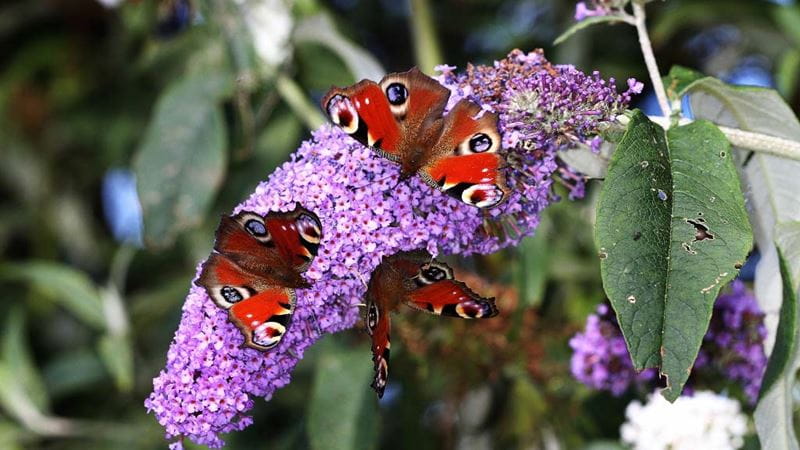
Also spelt buddleja, this purply/pink-flowering bush grows easily and quickly in a sunny garden. British Garden Centres recommends it as a low-maintenance option suitable for beginners. Although this cultivar is a dwarf buddleia, it will still need to be pruned in late spring to keep it in shape. Buddleia is a real magnet for summer pollinating insects (it’s also known as the ‘butterfly bush’).
Keeping on top of deadheading will help ensure this food source lasts longer throughout the year and into autumn.
Soil type: Any pH, well drained but moist. Position in full sun or partial shade.
When to plant: Any time of year, though spring is best.
Add some height
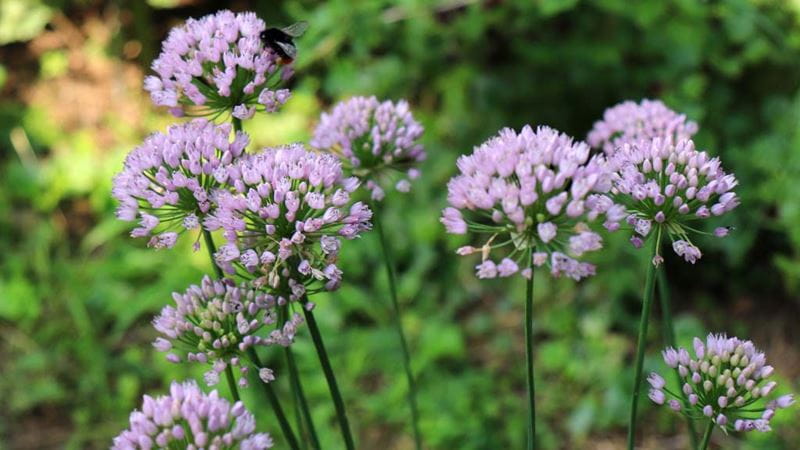
Alliums are generally considered easy to look after. Once planted, you can sit back and leave them be. They’re a great option if you want to add some height to lower perennial displays in your garden.
As well as being one of the best plants for a raised bed, King Charles has included alliums in his wild meadow at Highgrove. “They create a regal presence in the garden and continue to impress long after the blooms fade,” says Chris Bonnett, founder of GardeningExpress. “These perennials are low maintenance and look good in any garden.”
‘Summer Beauty’ likes to grow in nutrient-poor soil, so you don’t even need to top it up with compost. The RHS suggests just adding a bit of grit into its planting hole to improve drainage from the outset. It’ll flower between June and September and is a favourite of bees and other pollinators.
Soil type: Slightly acidic, but well drained is more important. Position in full sun or partial shade.
When to plant: February-June, then September-November.
Summer Beauty’ is toxic to pets.
Fights back after frost

The purple and scarlet drooping petals of fuchsia last from early summer and into autumn. ‘Riccartonii’ is suitable for pots, hanging baskets and borders, but can reach heights of around 2m (6ft 7in) and maybe more in some cases.
The RHS suggests pinching out the growing tips of young plants after the sixth or seventh pair of leaves to make your plant bushier. “During the growing season water regularly, applying a balanced liquid fertiliser each month,” the organisation adds. If you experience particularly cold winters, the hardiness of this fuchsia means it should revive each spring despite frost damage. Cold, drying winds are of greater concern, so you might need to protect the plant from that.
Soil type: Acidic to neutral, well drained but moist. Position in full sun or partial shade.
When to plant: Any time of year.
Provide late winter colour
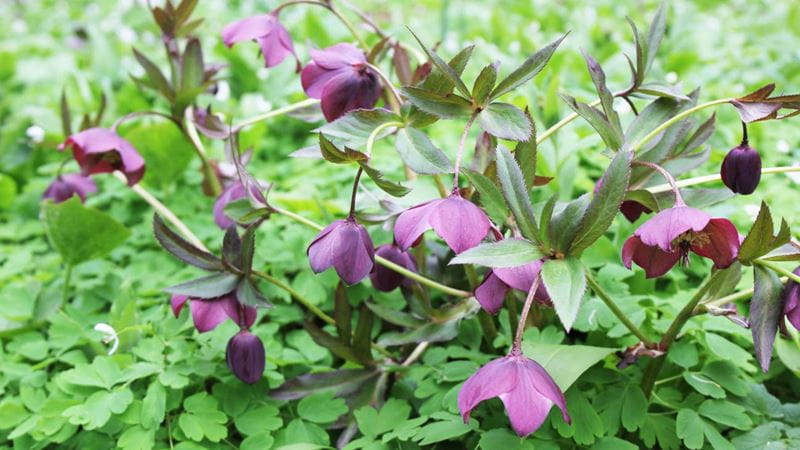
This gothic, purply/black-flowering plant blooms from later winter into spring – just when your garden is crying out for petals. Also known as hellebore, it’s happy in partial shade; just make sure it’s not exposed to harsh, cold winds.
This plant just needs an annual autumn mulch and deadheading of faded flowers as they appear. It’s a tasty meal for snails too, which is something to keep in mind if you’re not able to keep an eye on those slimy snackers.
Soil type: Neutral to alkaline, well drained but moist. Position in partial shade.
When to plant: October-November.
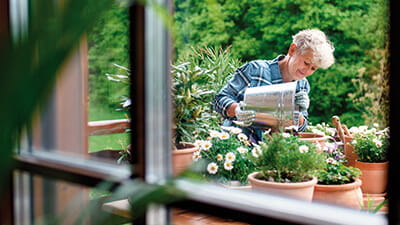

Saga Home Insurance comes with garden cover included. Find out what’s included and get tips to help secure your garden.
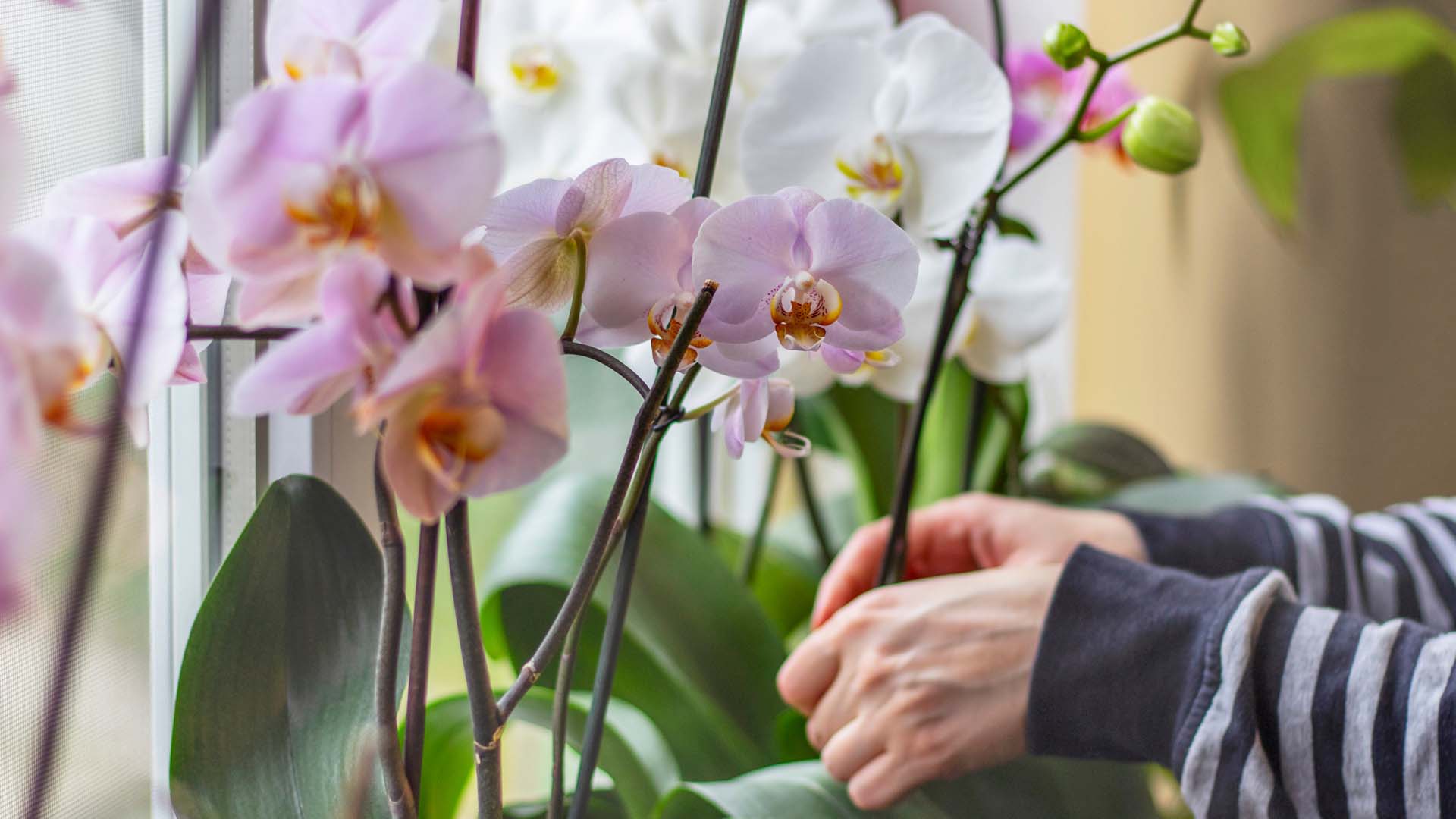
Our expert pruning and watering hacks include a top tip to keep them flowering from Alan Titchmarsh.
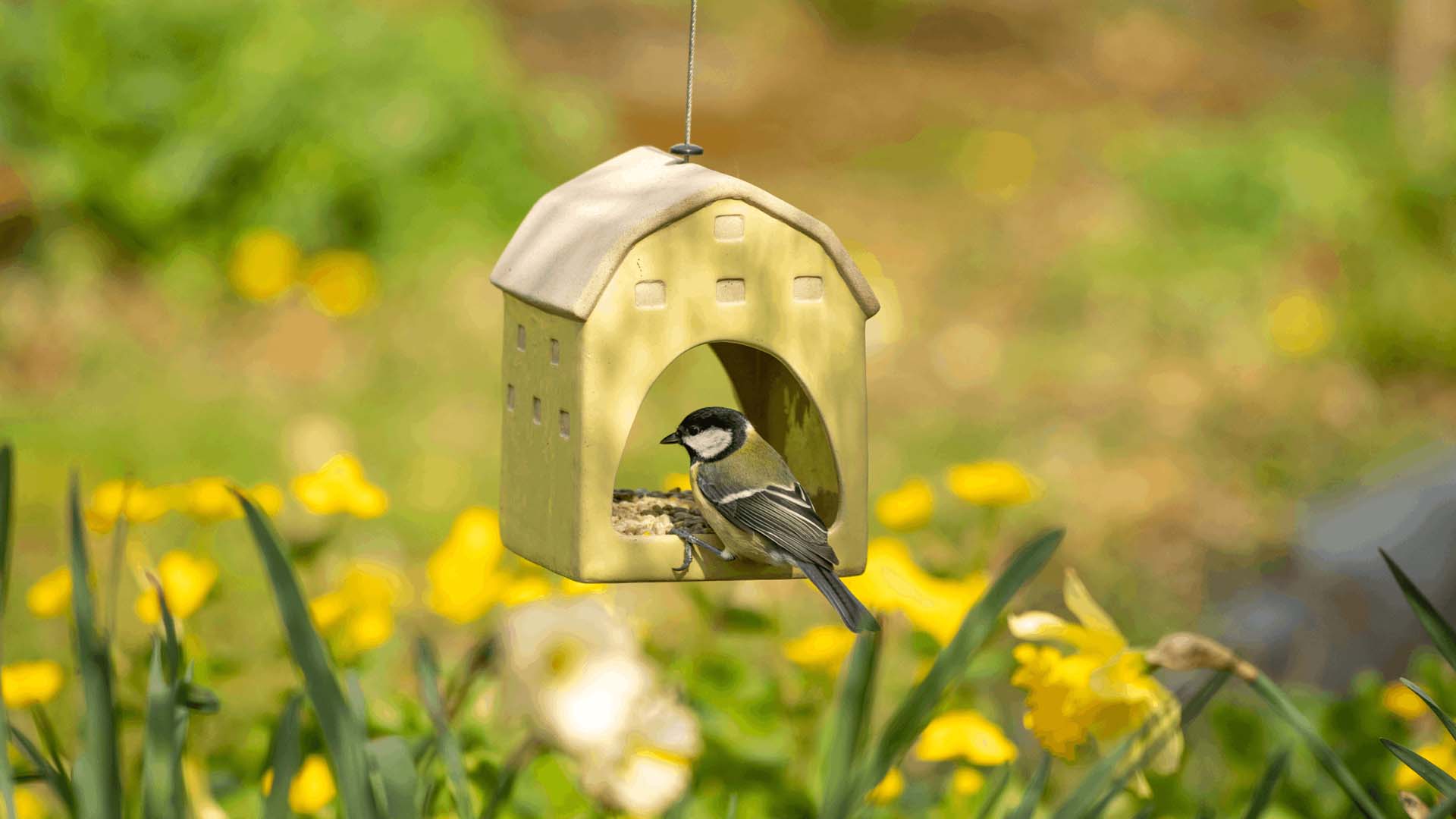
Don’t make these bird-feeding mistakes. Expert advice on how to feed birds in your garden safely.
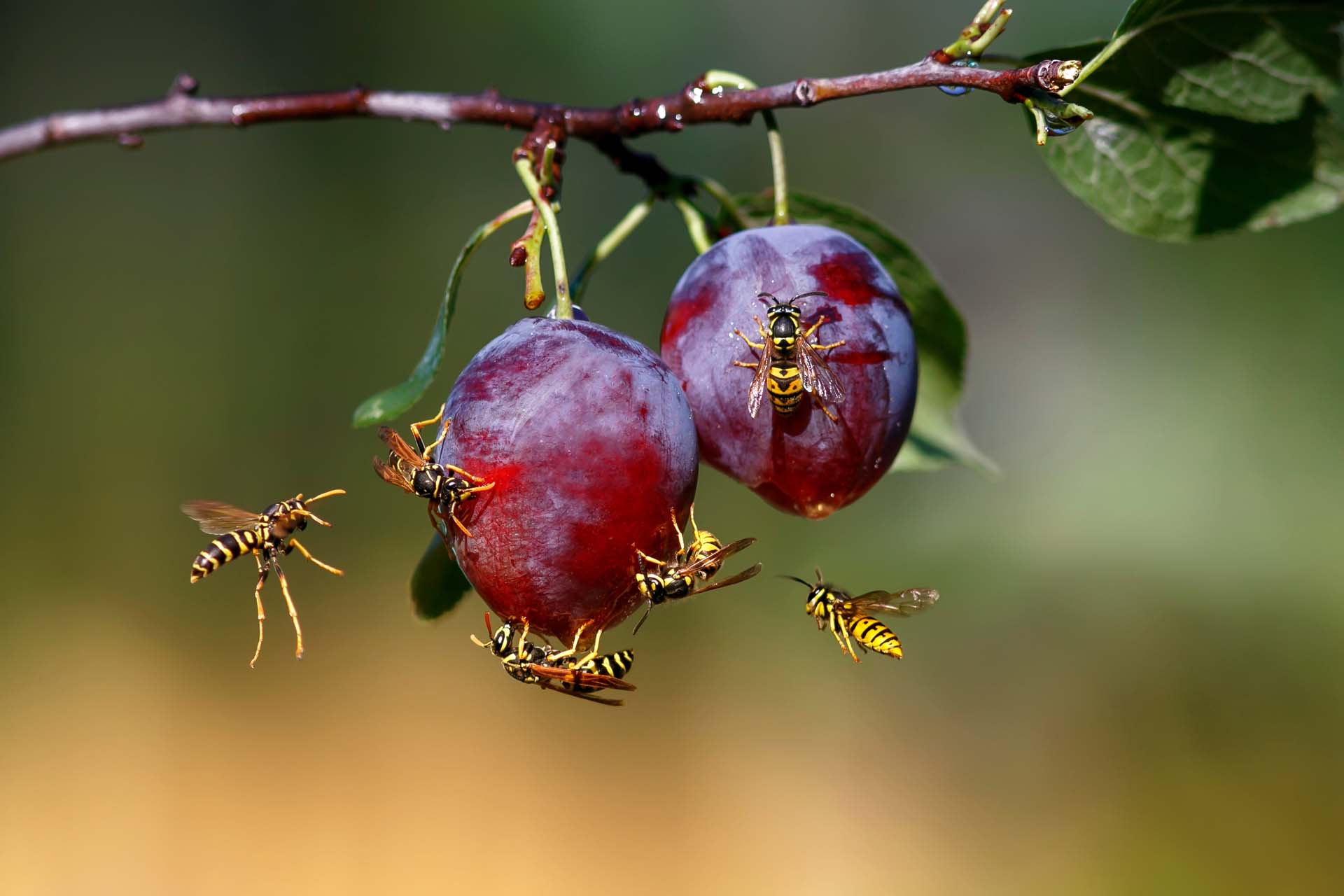
Blighted by buzzing? How to keep wasps out of your garden without harming them so you can enjoy the summer.
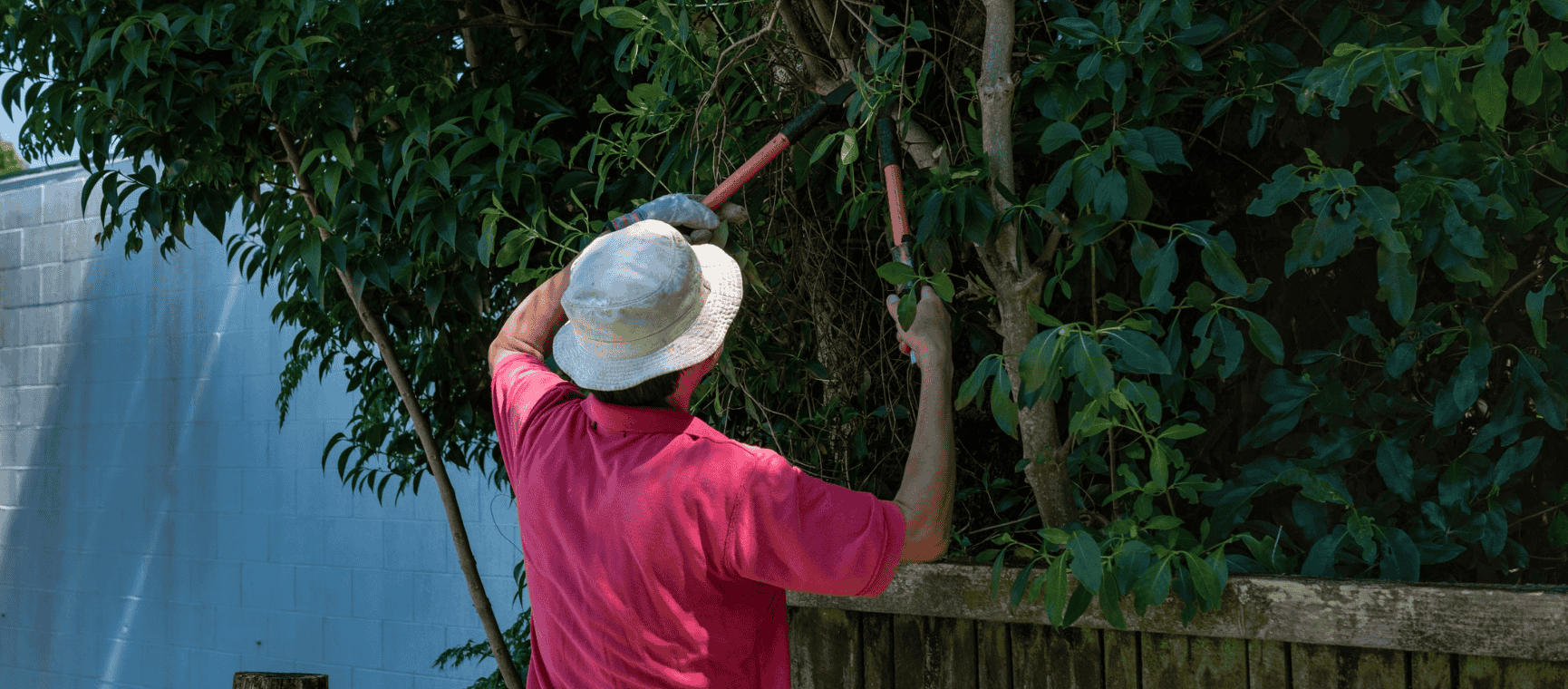
The ways you could be breaking the law in your back garden - with expert advice on how to avoid neighbour disputes, a fine or even a prosecution.
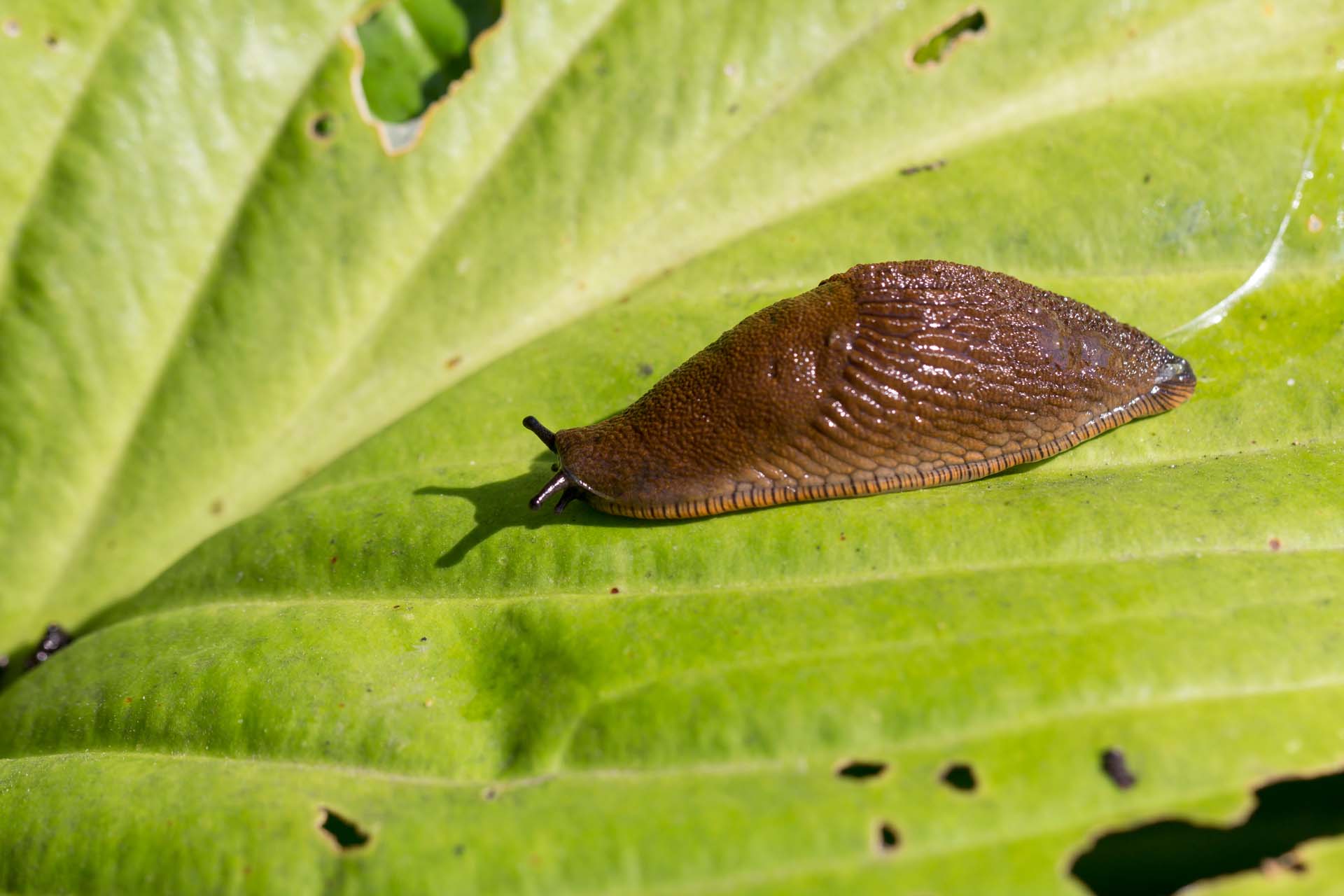
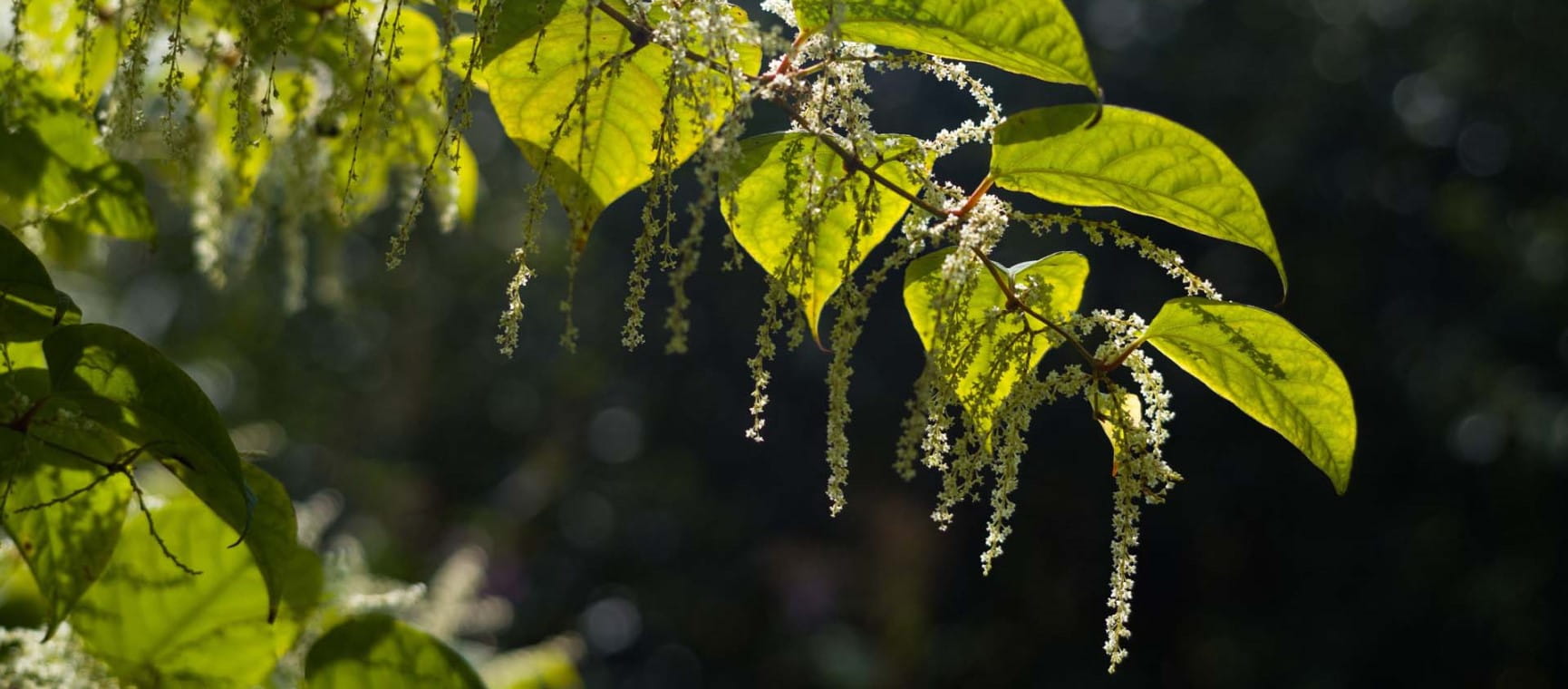
Everything you need to know about Japanese knotweed, the fast-growing plant nobody wants in their garden.